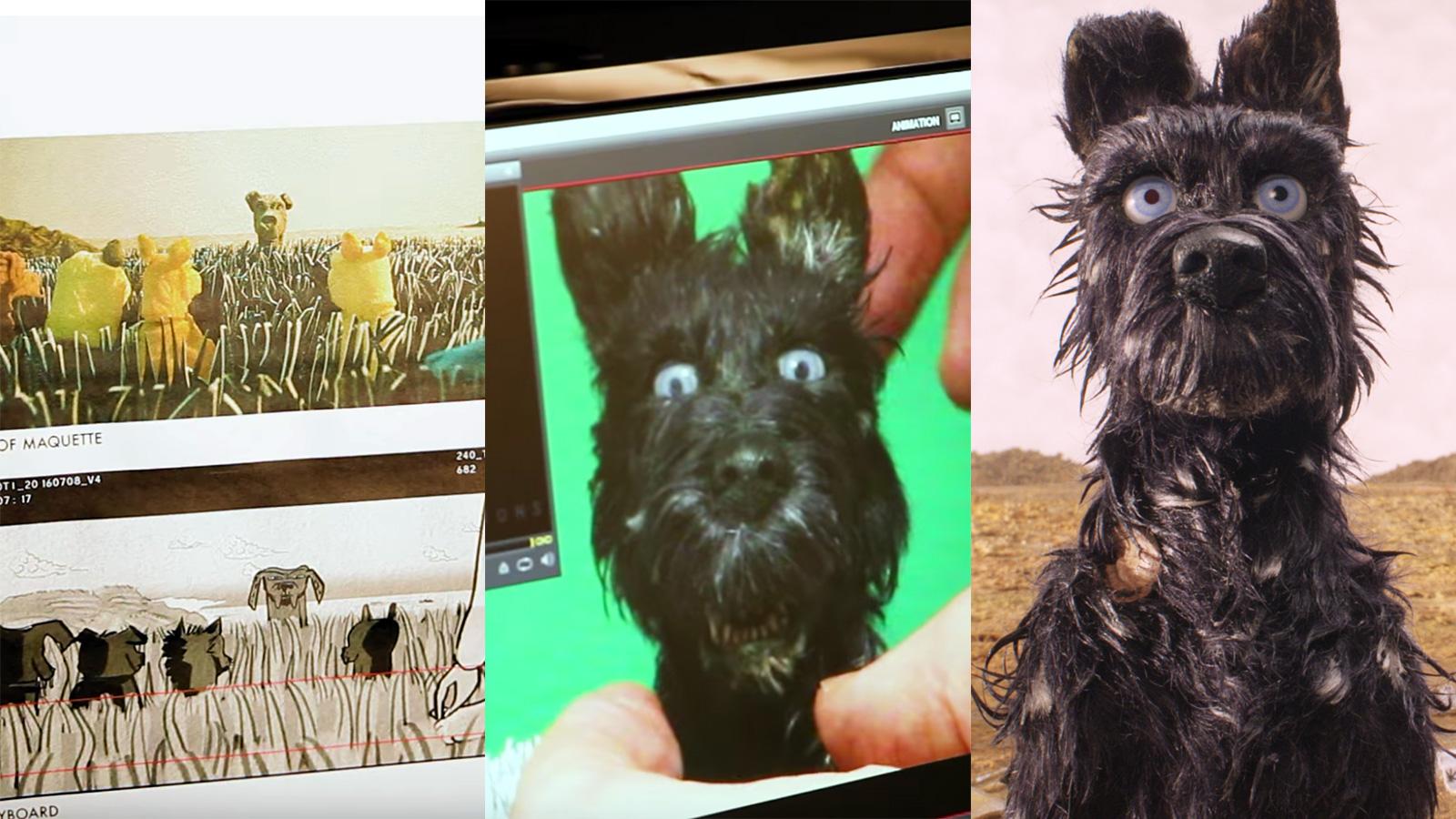
Find out how design of the characters, sets and even the weather evolved from Wes’ concept art to the final, realised film in this feature with Fox Searchlight’s newly released films and insight from lead designer Erica Dorn. Erica worked alongside Annie Atkins as part of a small team of designers for the stop motion film. Erica shared what it was like to work on Isle of Dogs for 26 months at D&AD Festival.
Wes Anderson’s second stop-motion feature film has had mixed reviews – some critics have loved it, while others took issue with its portrayal of the Japanese or found its artificial perfection left them cold – but all have praised the craft that has gone into its creation.
To help publicise the release of Isle of Dogs, Fox Searchlight has released a series of videos detailing the time, effort and artistry behind the realisation of the film’s world. The latest focusses on the creation of weather and other non-solid elements such as smoke, flames and flying paint. You can follow their creation from storyboards and concept art through production in the videos below.
Although the film’s design team was only made up of seven designers at its largest stage, it was responsible for working closely with the meticulous Wes Anderson himself, the animation, VFX, modelling and puppet departments. The designers also were responsible for putting together parts of the 250 paper sets (in small, medium and large sizes), including a huge amount of detail, such as the dog tags, shop signs on the streets and newspaper articles.
To get some idea of how intricate these sets were, see how the film’s weather and elements were created in the video below.
Ninety percent of the work as a designer was illustration and typography, Erica says, for props on sets, as well as some graphics on screen. Erica grew up in Japan but studied graphic design in London, where Isle of Dogs was made. Erica had previous experience working as an in-house illustrator and art director at a creative agency, before moving on to freelance.
She said landing the job on the film was a mixture of being able to work with Japanese typography, having experience working in Japanese agencies and the fact she was living close to where the film was being produced. Erica began as a support for Annie Atkins, but soon became lead designer when Annie went on maternity leave.
Isle of Dogs is set “20 years in the future”, but stylistically, it actually takes reference from the 1960s, so the design team looked at a lot of Japanese films from that time period for research into interior details such as the wallpapers, fabrics, fashion and bookcases.
For every set – and there were 250 – concept art had been created.
“It’s like a printout of what’s going on in Wes’ mind; a product of the teams going back and forth until they have a picture of the fictional place, and all we needed to do was fill in the details,” she says.
“[Wes] is very precise, it’s true,” she explains. “He absorbs all of these references and the output is definitely him. It’s almost a fictional and fetishised style of the original references but it still feels real and tangible, and that is down to the amount of detail that goes into it.”
In the video below, see the design and creation of the puppets.
The only way you can achieve the level of attention to detail that Wes possesses, is to work closely alongside the design team and those creating the puppets. The specific way a dog cocks his head is no coincidence, Erica says, but a specific instruction from Wes.
“For me, he feels like the Wizard of Oz; he’s omnipresent yet in direct contact with everybody.
“You start to think like him and make decisions like him and notice things he would notice – and when you design something together you’re not sure if you did that or Wes did it.”
To complete a set, the design team would create a list of graphics it needed using the script, concept drawings, references and an animated storyboard as a starting point.
For example, to create a lantern, the team would scour film archives and bring these references to Wes, who would pick out the ones he “thinks have interesting lettering styles or a particular tassel that’s interesting”, and that selection became the designers’ visual brief.
Erica and her team were responsible for making all paper and card props – everything from designing a clock face to a punch card – and the model makers and painters would create 3D objects that were more sophisticated.
See how the animators helped to bring the film to life in the video below.
Erica describes the fictional city, Megasaki City, as a hybrid of tall skyscrapers with a foreground of ‘old town’ inspired from woodblock prints and “little naming things we’ve put in for fun”. Other places, such as the noodle bar, were inspired by Japanese film director Yasujiro Ozu, and the milk bar, from Erica’s own experiences in downtown Osaka. See how the city was created in the film below.
Isle of Dogs, like Wes Anderson’s first stop-motion film The Fantastic Mr Fox, was filmed at 3 Mills Studios in London – near the city’s own Isle of Dogs, which runs south from the business district of Canary Wharf bordered on three sites by a U-shape in the Thames river.
Because each shot of the film is extremely detailed – down to every last painting hanging on the set walls – but some only feature on screen for one second, the film invites multiple viewings to really recognise the amazing craftsmanship that has taken place.
https://www.digitalartsonline.co.uk/news/motion-graphics/isle-of-dogs-lead-designer-erica-dorn-on-crafting-wes-andersons-precise-world/

